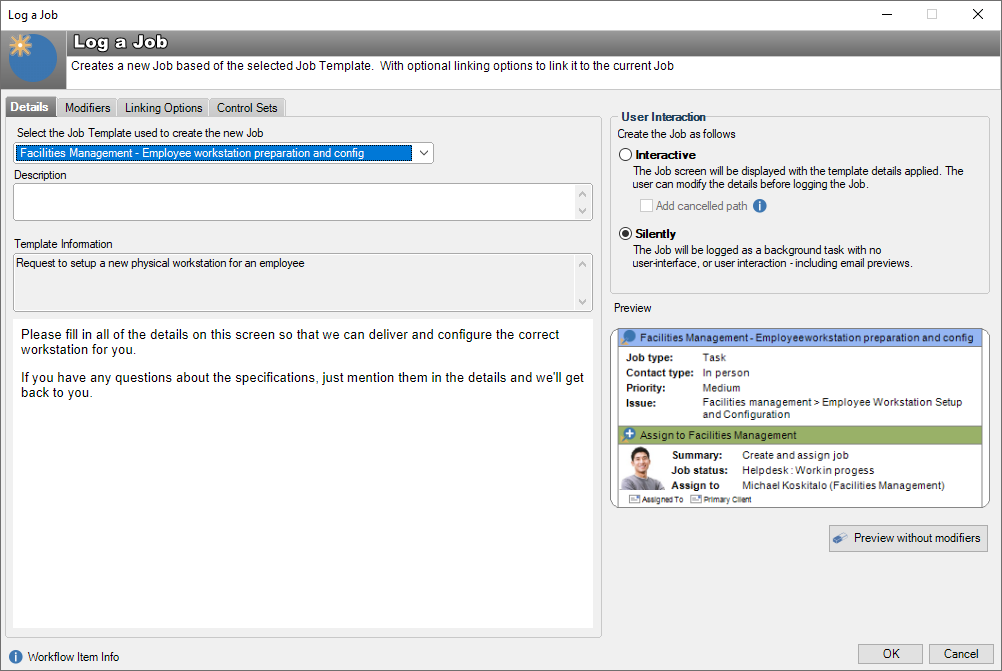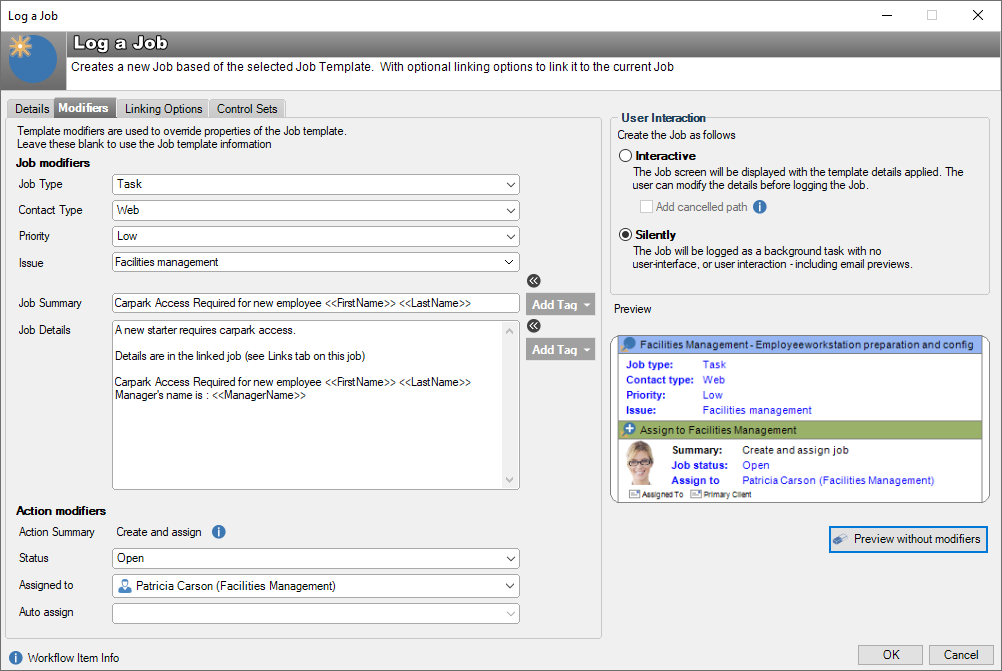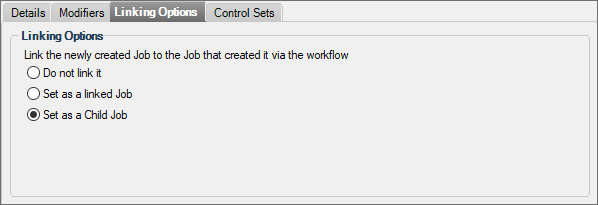Workflow - Log a job
One of the most powerful and useful features of a workflow is the ability to Log a job. This allows the workflow to break-out into a whole new job and is useful when multiple teams, or business processes are required for a given task. For every new job that is logged, this new job can have its own workflow and business rules associated with it like any other job, so this allows for some very creative and complex job workflow to take place if required.
Logging a new job is achieved in workflow via a Job Template.

 This workflow object can be configured to run silently, meaning it has no user interaction. Silent workflow object are displayed with this icon.
This workflow object can be configured to run silently, meaning it has no user interaction. Silent workflow object are displayed with this icon.
Details tab
In order to use this feature, you will need to create a job template that the workflow can use. When adding the Log a job object to the workflow, select the job template previously created for this purpose.

User Interaction section
Interactive
The interactive setting is used to display the new job logging process. When a Log a job workflow step is marked as Interactive, it means that the staff member that has invoked that step will need to manually log the job.
Silent
The silent setting is used to log the new job silently. The staff member that has invoked this workflow step does not see any user interface, or have any input into the new job being logged. HelpMaster simply logs this new job via the selected job template, and the workflow progresses to the next workflow step.
Preview
Displays a preview of all job template default properties and/or any modified properties from the Modifiers tab. Click and hold the Preview without modifiers button to see a preview of the default job template and release to view any changes made on the modifiers tab. Any modified properties will be displayed in blue and default job template properties in black.
Modifiers tab

To minimise the need for creating many new job templates, the modifiers tab allows you to change many of the selected default job template fields for specific use in the workflow.
Job modifiers section
This is the section that allows you to modify any of the available job specific fields. For a detailed description of each of the modifiable job fields, see the overview of the Job Screen.
Action modifiers section
This section allows you to modify a few of the fields in the create and assign action used by the job template. See the Action Screen for further details of each available field.
Linking Options tab

When a new job is logged via a workflow step, the following linking options are available:
- Do not link it - The new job is not linked to the original job in any way
- Set as a linked Job - The new job is linked via a simple link
- Set as a Child Job : The new job is linked to the original job as a child. The original job then becomes a parent
Control Sets tab

The following control set inheritance options are available:
- Do not Copy any Control sets - The new job does not inherit any other control sets but will still carry across any set from the job template selected on the details tab
- Copy all Control sets from the parent job - The new job will inherit all of the control sets from the parent job in addition to any in the job template
- Copy selected Control Sets : The new job will inherit any all of the selected control sets in addition to any in the job template
Workflow Ideas
Human Resources - New employee onboarding. An initial HR job can spawn new jobs for:
- IT (computer, phone, account creation, email, access etc)
- Facilities Management (furniture, desk, chair etc.)
Use the linking options to create linked workflow.
See also
Feedback
Was this page helpful?
Glad to hear it! Please tell us how we can improve.
Sorry to hear that. Please tell us how we can improve.